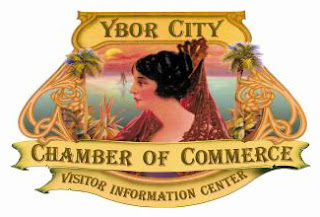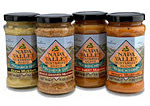Precedential No. 14: Strength of "PROQUEST" Mark Leads to Conquest of "INQUEST" in 2(d) Opposition
The Trademark Trial and Appeal Board sustained an opposition to registration of the mark INQUEST for computer research software, finding the mark likely to cause confusion with the renowned mark PROQUEST, registered and used for information retrieval systems and computer assisted research services. ProQuest Information and Learning Co. v. Island, 83 USPQ2d 1351 (TTAB 2007) [precedential].

Based on thousands of pages of exhibits, the Board agreed that Opposer is "a global leader in providing electronic and digital solutions and educational resources to institutions and individuals." Applicant Jacques R. Island's identification of goods "represents a large slice of the goods actually offered by Opposer," as well as of the goods identified in Opposer's registrations. Therefore, this du Pont factor "clearly favors the position of opposer herein."
As to channels of trade, both parties target the same customers: libraries, academic institutions, corporations, and government agencies. Although the purchasers of the parties' goods and services are discriminating, end users are "not likely to exercise more than ordinary care when confronted with the parties respective marks and products." Thus these two factors pointed in ProQuest's direction.
As to the strength of Opposer's mark, the Board noted that more than ten million college and university students currently have access to opposer's PROQUEST online service [TTABlog query: how many of them actually use the service?], as do more that 35,000 K-12 schools (with more than 70% penetration into middle schools and high schools). By 2004, the daily usage of the PROQUEST online service had increased to more than 2,500,000 page views per day. Since 1990, Opposer's revenues were in the hundreds of millions of dollars and it spent more that $40 million in advertising.
The Board found "widespread recognition and renown" for the PROQUEST mark. However, the Board was not convinced "that this mark is famous to members of the general public at large." [TTABlog comment: why the Board bothered to make this observation is not clear, since the CAFC ruled in Palm Bay Imports, Inc. v. Veuve Clicquot Ponsardin Maison Fondee En 1772, 73 USPQ2d 1689 (Fed. Cir. 2005), that fame for Section 2(d) purposes is to be measured with regard to "the class of customers and potential customers of a product or service, and not the general public."] Instead, the Board "would characterize this renown as niche market fame." [TTABlog comment: Why the Board would want to introduce the concept of "niche market fame" into the 2(d) arena is also not clear, particularly in a case where both parties occupy the same "niche" anyway.].
The Board noted that, since fame is considered a "dominant" factor in the du Pont analysis, "this critical factor weighs strongly in favor of finding a likelihood of confusion here."

With Applicant reeling from the findings made thus far, the Board turned to the similarities in the marks, ominously noting that when marks are applied to virtually identical goods and services, the degree of similarity required for a finding of likelihood of confusion is lessened.
The Board ruled that "Quest" is not descriptive, but at most suggestive of Opposer's goods and services. It agreed with Opposer that "Quest" is the dominant portion of each mark, and it found "a similarity in commercial impression despite the obvious dissimilarity in appearance, pronunciation and connotation of the respective prefixes." [TTABlog query: What about the marks as a whole?] Moreover, Applicant Island's mark, shown in standard character format in his intent-to-use application, could be displayed in a manner similar to Opposer's common law mark shown above, with the "Q" in larger size and different font than the other letters. Thus the issue of similarity of the marks favored Opposer.
Weighing all the factors, the Board found confusion likely, and it sustained the opposition.
Opposer also pleaded dilution, but the Board found it unnecessary to reach that claim. [TTABlog note: Although if the Board's ruling on likelihood of confusion were to be reversed, it might then have to decide the dilution claim. Perhaps it would have been better, in the interest of judicial economy, for the Board to decide the dilution claim as well, so that both issues could be appealed at once rather than handled separately].
TTABlog final comment: Despite the obvious differences in the marks and the plainly different meanings of INQUEST and PROQUEST, there was no way in heck that this ITU applicant was going to win this opposition.
Text Copyright John L. Welch 2007.










































